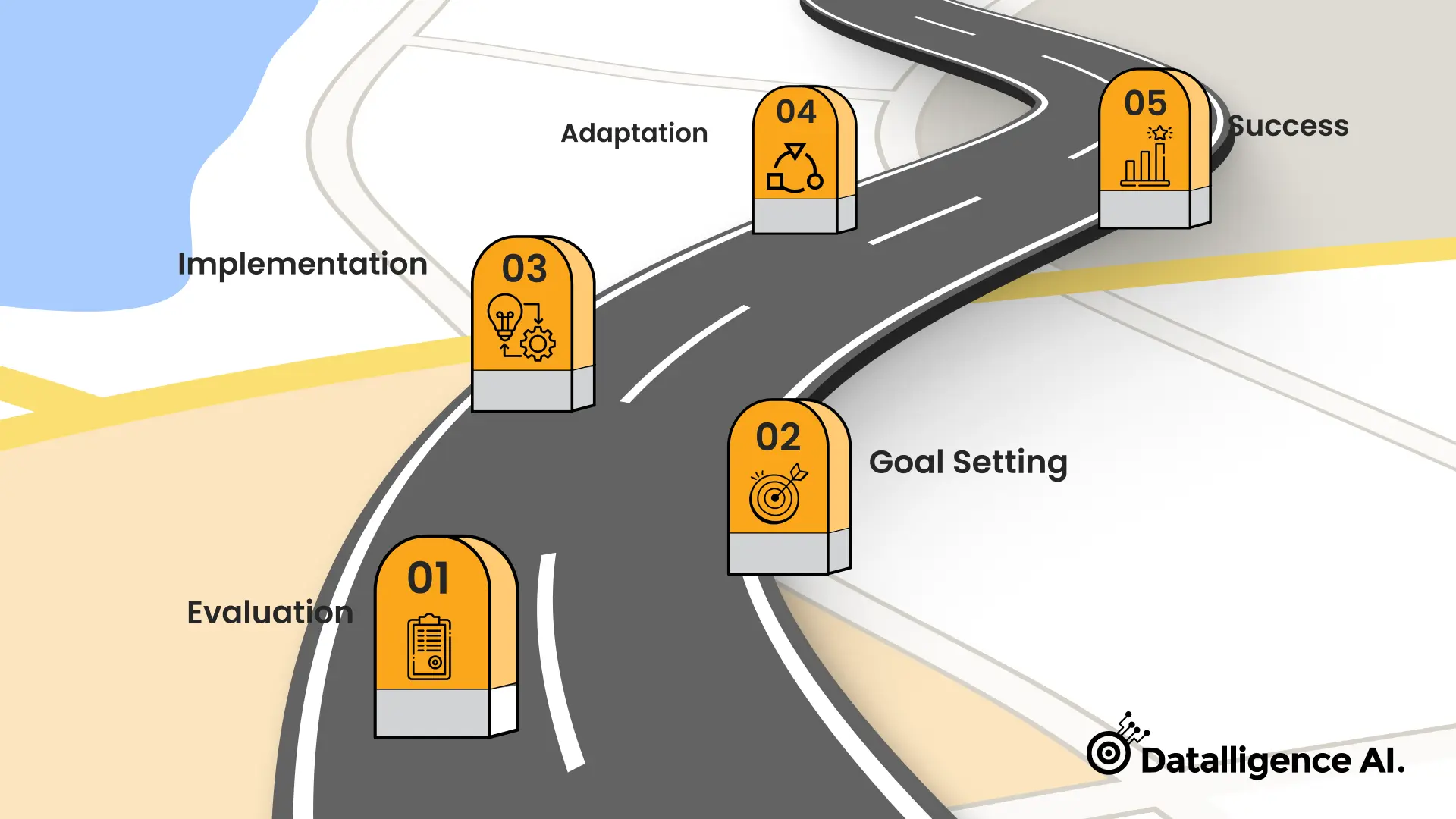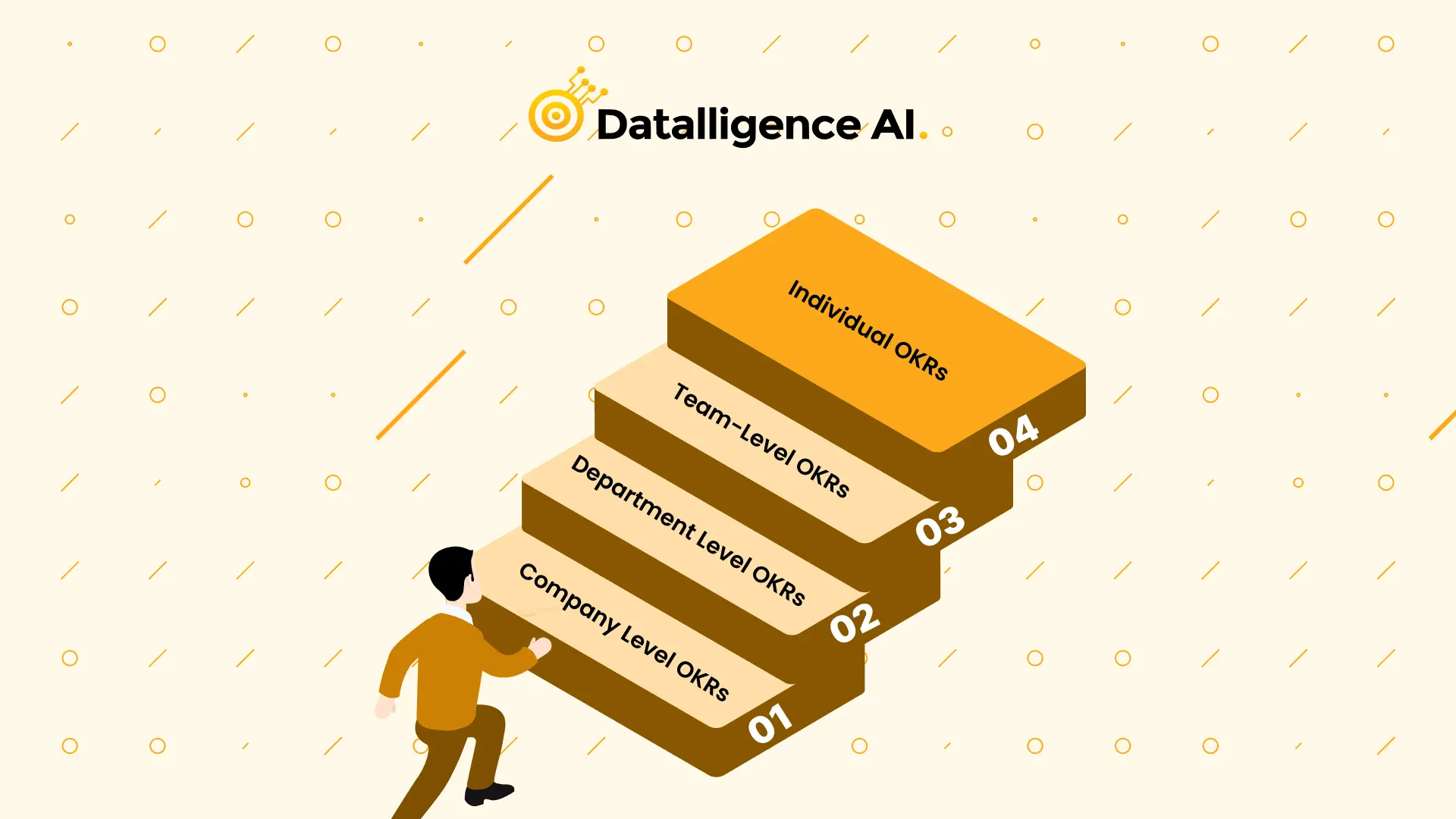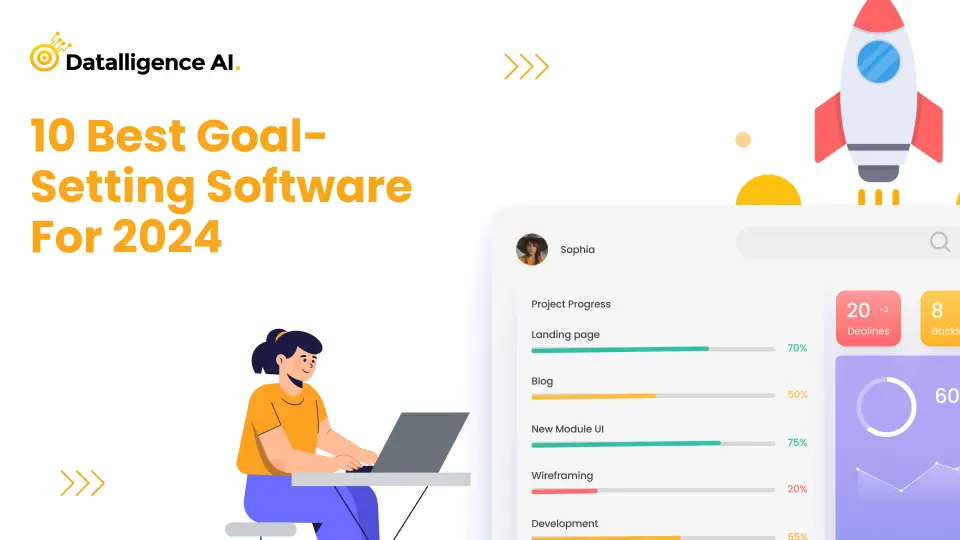In the realm of strategic planning and execution, defining and managing Objectives and Key Results (OKRs) has emerged as a vital tool for businesses. From startups to large corporations, leveraging OKRs is a proven way to streamline processes, align teams, and achieve ambitious goals. However, the effectiveness of your OKR program depends largely on how well you choose and implement your OKR levels.
This comprehensive guide will walk you through the different layers of OKRs, and how you can strategically establish them to maximize your organization’s productivity and success.
Understanding OKR Levels
The power of OKRs lies in their ability to align the entire organization towards a unified set of goals. To achieve this, OKRs are typically established at four distinct levels within the organization:
- Company Level OKRs
- Department Level OKRs
- Team-Level OKRs (Cross-Functional Team)
- Individual OKRs
Let’s delve into each of these okr levels, exploring their roles and how they contribute to the bigger picture.
Company Level OKRs: The Strategic Compass
Company-level OKRs serve as the strategic compass for the entire organization. They echo the company’s mission, vision, and long-term strategic objectives. For instance, a company levels OKR could be aimed at boosting the company’s overall revenue.
To quantifiably measure the progress towards this objective, key results are established. These could include targets like increasing account renewals, launching new products, or expanding operations to additional countries.
These high-level OKRs cascade down the organizational ladder, shaping the department-level OKRs, and ensuring a top-down alignment of goals across the organization.
Department Level OKRs: The Tactical Blueprint
Department-level OKRs translate the company’s strategic goals into actionable plans at the departmental level. They reflect the department’s significant projects and goals that contribute to the overarching company OKRs.
For instance, if the company’s OKR is to increase revenue, the marketing department’s OKR could be to penetrate new markets and generate fresh leads. These department-level OKRs, in turn, shape the individual or team OKRs within the department.
Team-Level OKRs: Fostering Collaboration Across Functions
In some scenarios, achieving specific key results demands expertise and involvement from various departments. In such cases, a cross-functional team is formed, and a team-level OKR is assigned.
For example, an OKR like “Strengthen Our Sales Team” will entail efforts from sales, HR, and customer service departments. Forming a cross-functional team and assigning a collective OKR ensures clarity, transparency, and collaborative effort toward achieving the shared goal.
Individual OKRs: Customized Milestones for Personal Growth
Last but not least, individual OKRs bring the strategic alignment down to the employee level. These OKRs are derived from the department or team-level OKRs and are tailored to the individual’s role and responsibilities.
For instance, if a department’s key result is to acquire 30 new leads from a specific region, this could become an objective for the digital marketing head. They could then establish key results to measure their progress towards achieving this objective.
Harmonizing Personal and Team OKRs: Navigating the Balance for Enhanced Performance
The choice between personal OKRs and team OKRs depends largely on the nature of the tasks and the organizational structure. Personal OKRs offer more clarity on individual responsibilities and accountability. However, team OKRs foster collaboration and collective effort towards shared goals.
Both these okr levels have their unique advantages, and striking the right balance is crucial for maximum efficacy.
Finding the Right Fit for Your OKRs
The best practice when it comes to establishing OKR levels largely depends on your organization’s structure, size, and goals. However, there are five common approaches to consider:
- Corporate-Level OKRs Only: Begin by establishing OKRs solely at the corporate level. This approach provides a clear focus on overarching organizational objectives and ensures alignment across the entire company.
- Corporate-Level OKRs + Department-Centric OKRs: Expand beyond corporate-level OKRs by introducing department-centric OKRs. This approach allows departments to set objectives tailored to their specific functions while aligning with broader organizational goals.
- Corporate-Level OKRs + Individual-Centric OKRs: Incorporate individual-centric OKRs in addition to corporate-level objectives. This approach provides clarity on individual roles and contributions, fostering accountability and alignment with organizational priorities.
- Corporate-Level OKRs + Department-Centric OKRs + Individual-Centric OKRs: Adopt a comprehensive approach by combining corporate, departmental, and individual-level OKRs. This approach ensures alignment at all levels of the organization, from overarching strategic objectives to individual performance.
- Cross-Functional OKRs: For initiatives requiring collaboration across departments or teams, consider implementing cross-functional OKRs. This approach promotes teamwork, innovation, and alignment across diverse skill sets and functions.
Progressing Towards Your Desired Position with OKRs
The beauty of OKRs is that they are flexible and can be adjusted as you progress. You can start with a simpler approach, like setting OKRs only at the company level, and gradually add more layers as your organization grows and matures.
Thinking ahead will help you establish a Roadmap for your OKR Journey

Before launching your OKR program, it’s crucial to understand the benefits and limitations of each approach and how they align with your business goals. Establishing a clear roadmap for your OKR journey from the onset can save you from potential hiccups down the line, ensuring a smoother and more effective implementation of your OKR program.
Can be a Great First Step
Starting with a simpler approach like setting company-level OKRs can be a great first step on your OKR journey. It keeps things straightforward, and easy to understand and demonstrates a clear commitment to the OKR methodology.
Commitment to the Methodology is real clear to all Employees
When the top-level management adopts the OKR methodology, it sends a strong message of commitment to all employees. It sets a clear direction for the entire organization and fosters a culture of goal alignment and strategic execution.
Common Challenges and Solutions in OKR Implementation
Implementing OKRs across an organization can be challenging, but with strategic solutions, these challenges can be effectively managed for success.
Ensuring clear ownership for each OKR is crucial as it promotes accountability and clarity of responsibility.
Aligning personal OKRs with organizational goals reinforces the idea that individual efforts contribute to broader objectives.
Engagement with OKRs is vital for their success; assessing team understanding and buy-in is essential to ensure everyone comprehends their role as an OKR owner.
Focusing on outcomes rather than outputs ensures that objectives drive meaningful impact and change in behavior.
Limiting Key Results to 3-5 per Objective helps maintain focus and trackability, avoiding overwhelming lists of tasks.
Involving stakeholders during the planning phase fosters collaboration and productive discussions, aligning objectives and key results.
Setting ambitious goals beyond routine tasks encourages growth and innovation within the organization.
Regularly updating key results progress ensures OKRs remain dynamic and relevant to the organization’s evolving needs.
Ensuring key results are measurable and numeric facilitates precise tracking towards achieving objectives, avoiding ambiguity in progress assessment.
Conclusion
Establishing the right OKR levels is a strategic decision that can significantly impact your organization’s performance and success. Whether you opt for personal OKRs vs team OKRs or a mix of both along with company and department-level OKRs, the key is to ensure alignment with your business goals and flexibility to adapt as your organization evolves.
At Datalligence, we specialize in providing advanced data analytics and AI solutions to help businesses harness the power of data and strategic planning.
Our experts can guide you in implementing the most effective OKR program for your organization, tailored to your unique needs and objectives. Contact us today to learn more.











